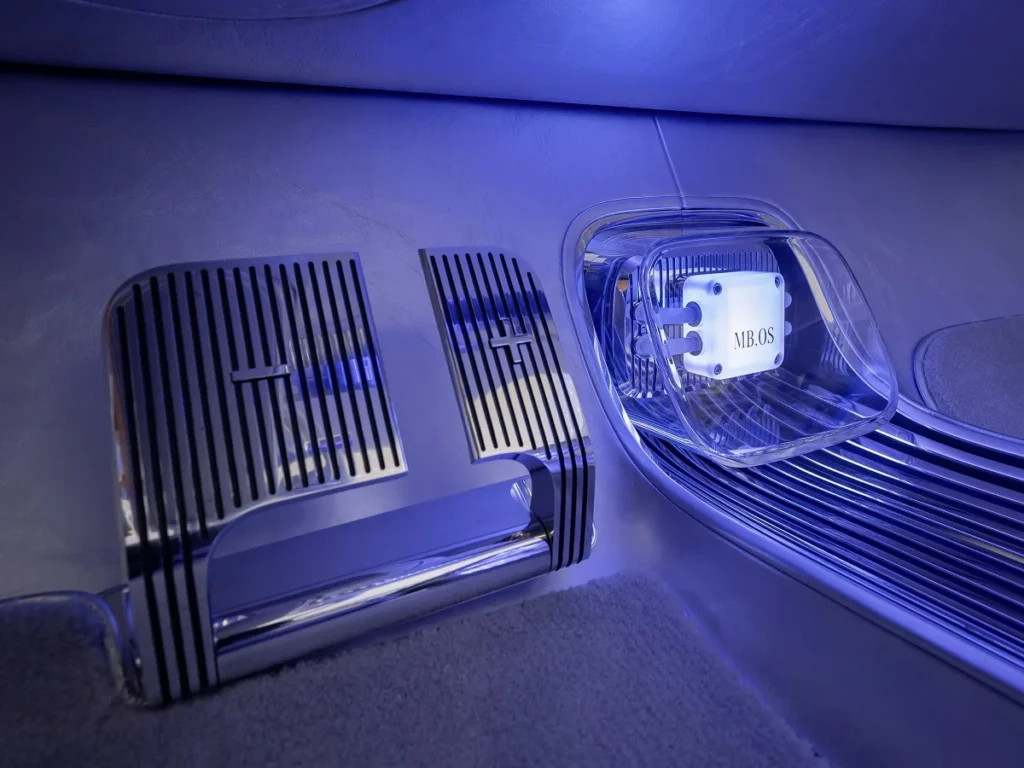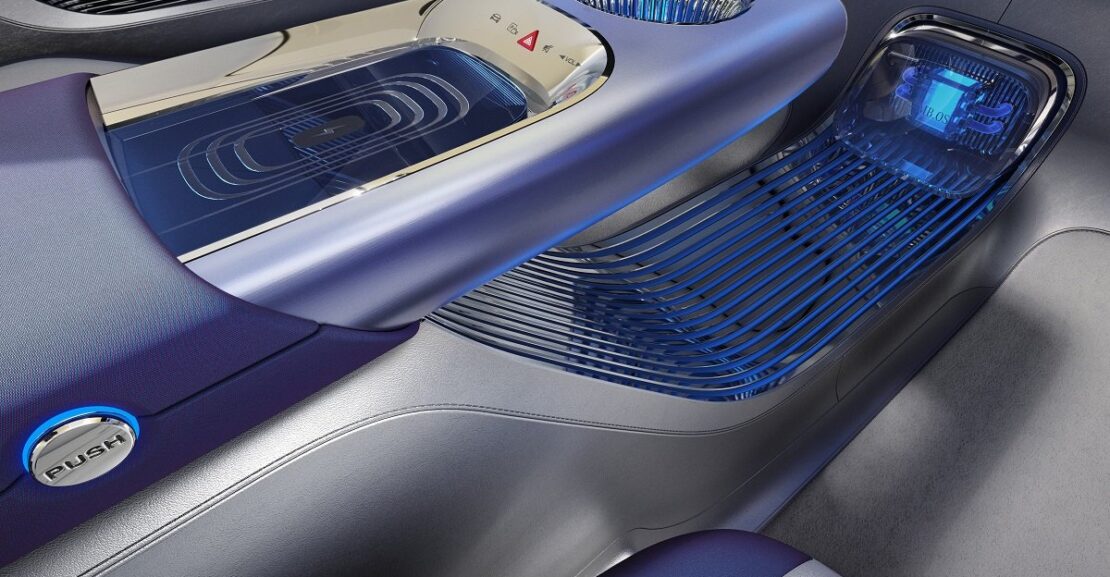In the ever-evolving landscape of mobility, the significance of technology and innovation has reached unprecedented levels, and few automakers epitomize this commitment more than Mercedes-Benz. The forthcoming MB.OS, currently in development, is set to redefine the standards in various automotive domains. This cutting-edge software will make its debut on new vehicles built on Mercedes’ revolutionary Mercedes Modular Architecture (MMA) platform in the coming years, promising a paradigm shift in infotainment, connectivity, convenience, charging infrastructure, advanced driver assistance systems (ADAS), and autonomous driving.
As Mercedes-Benz pushes the boundaries with MB.OS, the automotive industry can anticipate a transformative leap forward, marking a new era in integrating technology within vehicles. This underscores Mercedes-Benz’s dedication to keeping pace with but leading the charge in the dynamic and tech-driven landscape of modern mobility.
How Does MB.OS Operate?
A few years ago, Mercedes-Benz embarked on a mission to develop an in-house proprietary operating system, driven by the ambition to deliver state-of-the-art software capabilities that redefine user experience in automobiles. The result of this endeavor is MB.OS is a purpose-built chip-to-cloud architecture that Mercedes-Benz plans to standardize and integrate into every model across its future portfolio. What sets MB.OS apart is its ability to facilitate real-time, comprehensive software updates throughout the lifespan of the vehicle, ensuring that owners can continuously benefit from the latest advancements.
Mercedes-Benz asserts that MB.OS is designed to enhance all the key domains crucial to the ownership and operating experience of a vehicle. These include infotainment, automated driving features, body and comfort systems, and driving and charging functionalities. By prioritizing each of these aspects, Mercedes-Benz aims to provide unparalleled ease, functionality, and adaptability for users, solidifying its commitment to pushing the boundaries of automotive technology.

MB.OS Partnerships and Collaboration
While Mercedes-Benz has taken the lead in developing its advanced screen-based operating system in-house, the approach has not been isolated. The German luxury sports automaker designed the system’s foundational layer using its own hardware and programming language. However, from the outset, the strategy involved collaborating with select technology partners possessing expertise in specific areas of mobility, such as services, content, and vehicle functionality. Mercedes emphasizes that these strategic partnerships with key tech players in both hardware and software are crucial for efficient development and rapid scalability.
One notable collaboration is with NVIDIA, a technology partner providing software, data, and artificial intelligence (AI) expertise to MB.OS. NVIDIA’s Orin system-on-chip is employed to enhance automated driving capabilities, specifically for Level 2 and Level 3 functionality. NVIDIA is recognized for its specialization in graphics processing units, application programming interfaces, and high-performance computing, particularly in the mobile and automotive sectors.
In addition, Mercedes-Benz is incorporating next-generation sensors, including light detection and ranging (lidar) sensors from Luminar. Another significant partnership is with Google, focusing on the development and implementation of an advanced in-car navigation experience with precise mapping and embedded access to data such as Place Details. Mercedes is also collaborating with various partners to integrate entertainment options, including popular platforms like TikTok, Zoom, Vivaldi for web browsing, and game developer Rovio, known for creating Angry Birds. These applications will benefit from regular over-the-air (OTA) updates, ensuring the activation of future features for an evolving and dynamic in-car experience.
Enhanced Infotainment Experience
MB.OS seamlessly integrates an extensive array of content, covering music, video, gaming, and productivity applications. Leveraging a full-width high-definition screen, immersive sound, and voice-control activation, the system offers a comprehensive and engaging user experience. Powered by the Google Maps platform, MB.OS provides real-time and predictive traffic information, automatic rerouting, range management tailored for electric vehicles (EVs), and Place Details, offering detailed information about over 200 million places worldwide.
Moving beyond traditional navigation and mapping functionalities, Mercedes-Benz aims to transform its infotainment system into a versatile one-stop hub for entertainment and business. The range of applications includes arcade-style games from Rovio and Antstream, as well as video conferencing solutions from Webex and Zoom. This expansion underscores Mercedes-Benz’s commitment to providing a holistic and dynamic in-car experience that goes beyond the conventional boundaries of automotive technology.
Advancing Autonomous Driving
Mercedes-Benz is set to introduce advanced autonomous capabilities, starting with enhanced Level 2 autonomy for urban use. However, the long-term vision involves progressing to Level 3 autonomy, allowing for automated driving at speeds up to 80 mph. This transition will be facilitated by the NVIDIA Drive platform, which supports fully updateable automation systems. The NVIDIA Drive Orin system-on-chip plays a pivotal role in this advancement, boasting an impressive capability to conduct 254 trillion operations per second. This high processing power enables the system to handle data from a comprehensive suite of sensors positioned around the vehicle, including lidar sensors provided by Luminar.
These sensors are designed to recognize even small objects with low reflectivity in the infrared spectrum. The data captured by these sensors serves as input for an advanced autonomous driving system, leveraging machine learning and artificial intelligence (AI) functionalities. Mercedes-Benz’s commitment to incorporating cutting-edge technology from NVIDIA reflects a strategic move toward realizing increasingly sophisticated and capable autonomous driving capabilities in its vehicles.

OTA Upgrades
MB.OS introduces a groundbreaking approach to software management, featuring full upgradeability and continuous improvements through over-the-air (OTA) updates. Mercedes-Benz aims to deliver new features to customers seamlessly via apps, the web, or directly within the vehicle. One of the key advantages of MB.OS is its decoupling of hardware from software, enabling faster innovation cycles and significantly enhancing the flexibility and speed of updates. This approach allows Mercedes-Benz to stay at the forefront of technology and respond swiftly to evolving customer needs.
To achieve comprehensive connectivity, MB.OS relies on the Mercedes-Benz Intelligent Cloud.
The customer experience is streamlined through three distinct upgrade bundles:
MB Connect: Governs vehicle functions such as navigation, entertainment, and communication.
MB.Charge: Offers Electric Vehicle (EV) customers priority access to the Mercedes-Benz high-power charging network.
MB.Drive: Expands the functions of Advanced Driver Assistance Systems (ADAS).
Starting in 2025, owners can further enhance and customize their vehicle functionalities over its lifecycle through the Mercedes Me Store. This customer-centric approach reflects Mercedes-Benz’s commitment to providing a seamless and personalized driving experience, backed by continuous innovation and the adaptability afforded by the MB.OS platform.

